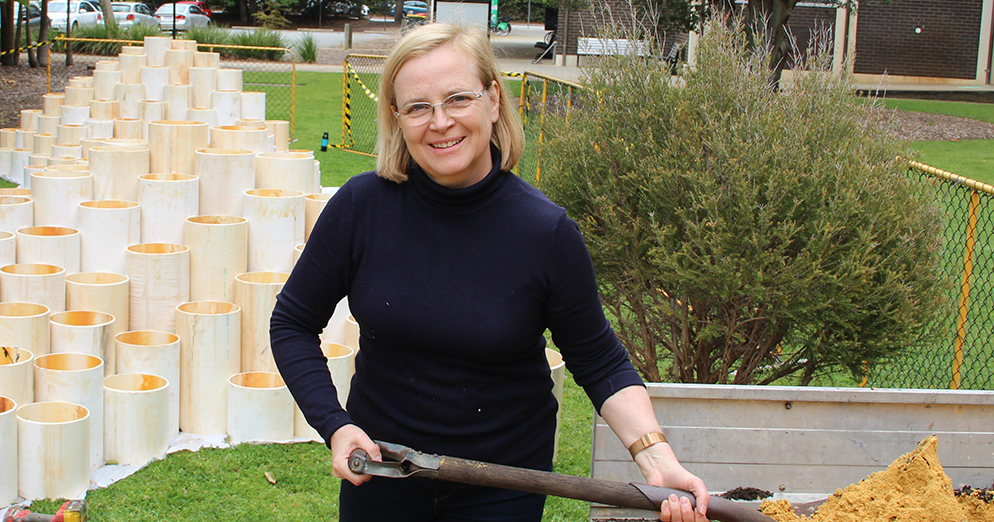A new art installation on the UWA Nedlands campus is bringing Perth’s unique landscape to life.
Shifting Sands, created by School of Design researchers, is a ‘living lab’ designed to engage the community with sustainable design practices.
With three distinct plots (coastal sand dunes, sandy limestones and Darling Scarp), the art installation features native plants and recycled pipes donated by a local company.
Dr Maria Ignatieva, who led the installation project, said the artwork highlighted the importance of incorporating nature into our everyday lives.
“Shifting Sands is a practical expression of the ‘biophilic city’ concept: essentially, the idea that we need nature within our cities to make them more liveable and enjoyable,” she said.
“Nature serves so many of our needs: it creates a microclimate, reflects and mitigates climate change, contributes to carbon sequestration, and boosts our psychological and physical health."
Dr Maria Ignatieva
“This installation uses native plants, which require almost no watering, as well as recycled materials, to emphasise the importance of sustainability in our cities and landscapes.”
Shifting Sands has attracted a wide audience, with local residents, students and groups from the nearby childcare centre all stopping to view the plants or relax on the grass seats.
Its popularity is no surprise, given Dr Ignatieva’s background. Over the past few decades she’s lived and worked in Russia, the United States, New Zealand and Sweden. Her projects have ranged from researching lawns as an ecological and cultural phenomenon and designing grass-free lawn for the Swedish University of Agricultural Sciences’ Ultuna campus, through to investigating how to create biodiversity friendly designed landscapes.

Image: Dr Maria Ignatieva helps construct Shifting Sands.
“Here in Australia, most of us are fortunate enough to live in houses with gardens,” she said.
“However, as we continue to build new houses and apartments – many of them with very small courtyards without any trees – we need to rethink how we design green spaces.
“We need public green spaces – ideally with lots of canopy coverage – near houses, so that we can cater for sporting groups, dog walkers, picnickers and other users.
“With a lot of cities around the world experiencing extended lockdowns this year, we’ve begun to really understand the importance of having nature and green spaces close to home.”
Shifting Sands was installed by students from the School of Design and made possible by School of Design staff, Campus Management, local nurseries and organisations and a grant from the Faculty of Arts, Business, Law and Education.
Dr Ignatieva is now working on sustainable solutions for lawns and reinforcing native biodiversity in urban landscapes using Perth as a case study.
